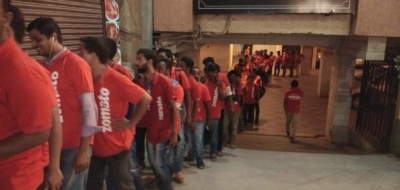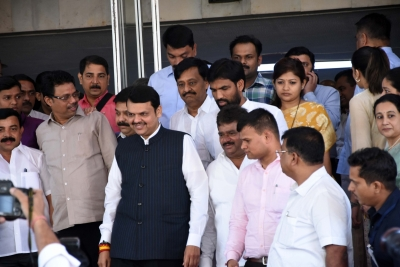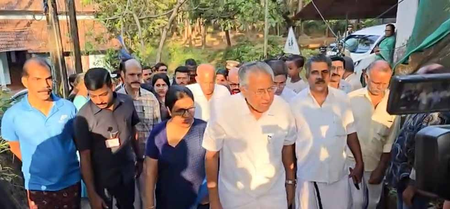
New Delhi, Sep 23 (IANS) The GST 2.0 reforms, which kicked in on Monday, saw a tremendous response from shopkeepers, auto dealers and every Indian household.
Arriving in perfect sync with the first day of Navratri, the reformed tax regime gave the common man a direct reason to rejoice with lower prices, simplified slabs and immediate relief on daily essentials.
PM Narendra Modi called GST 2.0 “a reform dedicated to the people of India”, and true to his words, it felt less like a dry policy change and more like a festive bonanza. Car showrooms witnessed serpentine queues, online carts overflowed with orders and buzzed with record-breaking festive sales.
The automobile sector stole the spotlight with historic numbers. Under the new GST structure, smaller sub-4 metre cars were moved into the 18 per cent slab, while the compensation cess on automobiles was completely removed.
On Day 1 of GST 2.0, Maruti recorded 80,000 enquiries and delivered 30,000 cars, its highest single-day performance in 35 years. Bookings for small cars surged 50 per cent compared to usual festival season rates.
Dealer billings for Hyundai also shot up, 11,000 on that single day, representing its best performance in five years. Tata Motors also recorded 10,000 car deliveries and over 25,000 enquiries on the first day of Navaratri, marking a strong start to the festive season, with a noticeable increase in showroom walk-ins, higher conversions, and a growing order book.
For countless families, GST 2.0 transformed long-postponed dreams into reality. Automobiles became not just more accessible, but a true festive purchase.
The excitement extended to the digital marketplace, where shoppers rushed to stock up on fashion, home essentials, and festive must-haves.
Flipkart and Amazon kicked off their festive sale events on Monday for loyalty programme users, with sellers and brands reporting strong early traction boosted by the GST cut.
Fashion brand “The Pant Project” saw a 15-20 per cent jump over last year, while Shadow Etail, a seller on both marketplaces, saw traffic in the home essentials segment surge 151 per cent from last week.
Fashion brands like Snitch reported a 40 per cent jump in online orders.
Electronics turned into another big success story under GST 2.0, with households taking advantage of reduced prices on high-demand products. While prices of split ACs have come down by Rs 3,000-5,000, high-end TVs have seen a price cut of up to Rs 85,000.
Companies like Haier reported almost 2 times the sales compared to a typical Monday, with many pre-bookings even before the new rates came into effect.
Blue Star estimated that GST 2.0 Day 1 sales were around 20 per cent higher compared to the same day last year.
TV sales also surged, especially in the 43-inch and 55-inch segments. Companies like Super Plastronics Pvt Ltd, selling largely through Flipkart, reported a 30–35 per cent growth in sales.
GST 2.0 delivered instant relief and sparked consumer joy from Day One. It reduced household expenses, revived demand across industries, and ignited the festive season with record-breaking sales. From cars and electronics to groceries and fashion, every sector felt the surge.
This was more than tax reform. It was a festival of savings, a boost to demand, and the real Diwali gift from PM Modi to the people of India.
–IANS
na/vd




